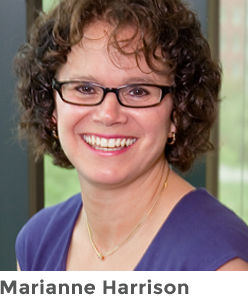Segregated funds had been sidelined for awhile, but two of the largest lifecos – Manulife Financial and Sun Life – now aim to step up sales of these investment vehicles.Top executives of these two insurers shared their plans at two presentations given at the National Bank Financial Canadian Financial Services Conference, held on March 24 in Montreal.
 “Seg funds is an area that we are particularly interested in,” says Marianne Harrison, Senior Executive Vice-president, and General Manager of the Canadian Division at Manulife. She explains there are great opportunities on the mutual fund and seg fund side of the business, where Standard Life, recently acquired by Manulife, has seen success.
“Seg funds is an area that we are particularly interested in,” says Marianne Harrison, Senior Executive Vice-president, and General Manager of the Canadian Division at Manulife. She explains there are great opportunities on the mutual fund and seg fund side of the business, where Standard Life, recently acquired by Manulife, has seen success.
Harrison points out that Manulife was active in the seg funds market a few years ago, but the insurer stepped back from this market to better manage its risk. “We like the balance of risk that Standard Life has taken (in segregated funds), so we think that there is a real opportunity for us, and we are working on the (joint) platform,” she continues.
Colm J. Freyne, Chief Financial Officer of Sun Life Financial, announced that his company will launch a new segregated fund product in late spring. Sun Life usually orchestrated such launches through CI investments, but this time the insurer is releasing its own in-house product.
“The distribution agreement (with CI) will not be extended,” he says. Instead, the company will be increasing the role of Sun Life Global Investments and introducing its own Sun Life brand of seg funds.
Acquisition and organic growth
Sun Life is also looking for acquisition and organic growth opportunities. “Organic growth opportunities have been quite significant and we have not failed to execute on those. That has given rise to higher expenses over the last couple of years. Some investors have commented on that, but we do see good opportunities particularly in Asia to grow organically. We're well represented to across the region. We did a small [acquisition] recently, Ryan Labs, which is an investment firm out of New York,” Freyne explains.
Harrison confirms that one way for Manulife to deploy capital was to make acquisitions, as the insurer did for Standard Life and New York Life. Manulife is also eyeing many growth opportunities, particularly in the banking services of its subsidiary, Manulife Bank.
“I think our opportunity continues to be that niche market that we have, like our Manulife One – a product where the big banks aren't going to follow. We're getting more and more ideas in terms of nontraditional products that we can come up with over the next few years,” Harrison says.
Longevity risk
Another growth avenue for Sun Life: insuring longevity risk, as it did for BCE with its commitments to retirees who had contributed to Bell Canada’s defined benefit pension plan. Freyne says that the insurer will focus on Canada before exporting this program to the United States, despite its leadership position in the American market for this type of plan.
“Clearly, [longevity risk] needs to be carefully monitored. Significant trends in mortality improvement need to be considered. We also have a lot of expertise in Canada because of the size of our book here. In the United States, we're thinking about the liability-driven investing side. So we would be more interested in working with institutional investors and pension plans to manage money on their behalf…that is what Ryan Labs brings to the table. In Canada, we would be a more complete set of solutions. We see lots of opportunity in Canada,” Freyne says.














